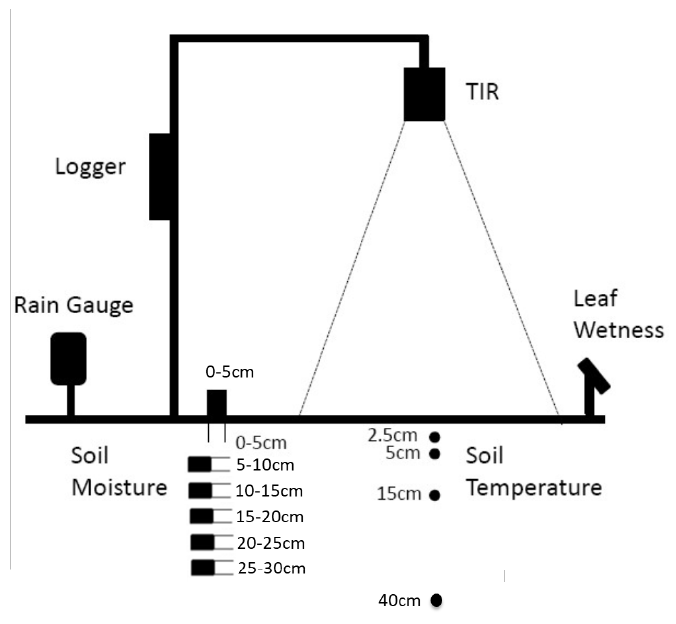APPLEx Monitoring Networks
Monitoring Networks
Each site of the monitoring network (Smith et al., 2012) measures the soil moisture at 0-5 cm, 0-30 cm, 30-60 cm and 60-90 cm with water content reflectometers (Campbell Scientific). The 10 OzNet soil moisture monitoring sites in the Yanco area are all ‘new’ sites installed throughout late 2003 and early 2004, located on a grid-based pattern within the 60 km × 60 km area allowing for measurement of the sub-grid variability of remote sensed observations such as near-surface soil moisture from AMSR-2, SMOS, and SMAP. All of these sites fall within the area covered by the broader PRISM area. These sites are divided between the 3 main land uses in the region— irrigated cropping (including the major rice growing region of the Coleambally Irrigation Area), dryland cropping (typically wheat and fallow), and grazing (typically perennial grass type vegetation).
The 24 additional soil moisture sites were installed in late 2009 to support the Soil Moisture Active Passive Experiment (SMAPEx) project. These continuously monitor soil moisture at 0-5 cm with a Hydraprobe and soil temperature at 1, 2.5 and 5 cm depths (Unidata® 6507A/10 Sensors). The sites were installed to monitor as much of the variety of land cover conditions in the area as possible. The network is equally distributed between irrigated cropping land (occupying approximately 1/3 of the PRISM study area) and grazing dry land.
Permanent monitoring stations will be supplemented by one identical temporary monitoring station at the 1 km focus area, and the addition of thermal infrared and leaf wetness measurements in the 3 km focus areas. Accordingly, these instrumented sites will include a rain gauge, thermal infrared sensor (Apogee), leaf wetness sensor (MEA LWS v1.1), six soil moisture sensors (Hydraprobes; 0-5 cm, 5-10 cm, 10-15 cm, 15-20 cm, 20-25 cm and 40 cm) and one soil temperature sensor (MEA6507A; 2.5 cm) in order to provide time series data during the sampling period.

Created: September 2022 Last Modified: September 2022
Maintainer: Xiaoling Wu, xiaoling.wu@monash.edu; Luisa White, luisa.whitemurillo@monash.edu